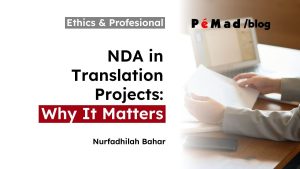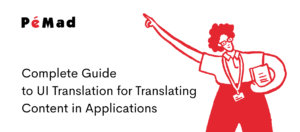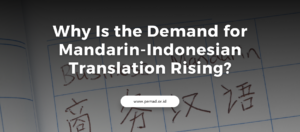In a cluster of islands stretching across Southeast Asia, one novel quietly broke through boundaries most stories never reach. Andrea Hirata’s Laskar Pelangi didn’t just find readers; it found people who saw themselves on its pages. What began in Indonesia became something bigger: a story that traveled far from its home, carrying warmth, hope, and the sharp edges of growing up in a place often overlooked.
This book didn’t need flashy words or heavy-handed messages to connect. It simply told the truth about childhood, friendship, and dreams, and that truth echoed across languages and cultures. But what happens when a story so deeply rooted in Indonesian culture meets the complex challenge of translation? The journey of this beloved novel across languages reveals fascinating insights about cultural translation, literary adaptation, and the universal power of storytelling.
Content :
ToggleThe Global Journey of an Indonesian Literary Treasure
When “Laskar Pelangi” first appeared in 2005, few could have predicted its meteoric rise. Set on the small island of Belitung, the semi-autobiographical tale follows a group of underprivileged students and their dedicated teachers at the Muhammadiyah Elementary School. Their struggles, dreams, and triumphs resonated so profoundly with Indonesian readers that the book sold over five million copies domestically, an unprecedented achievement in Indonesia’s publishing history.
But the book didn’t stop at Indonesia’s borders. Translated into over 30 languages, including English, Mandarin, Japanese, French, and German, “Laskar Pelangi” embarked on a remarkable international journey. Each translation represented not just a linguistic conversion but a cultural bridge, inviting readers from diverse backgrounds to experience the unique yet universal story of perseverance and hope.
The Translation Challenge: Beyond Words
Translating “Laskar Pelangi” presents unique challenges that go far beyond simple word-for-word conversion. As detailed in research from the University of North Sumatra, the novel is deeply embedded with cultural terms specific to Belitung Island and Indonesian society.
The English translation by Angie Kilbane, titled “The Rainbow Troops,” faced the formidable task of conveying cultural nuances while maintaining the emotional resonance of the original. How does one translate “gotong royong” (communal work spirit) or “warung” (small family-owned shop) in ways that preserve their cultural significance while remaining accessible to English readers?
According to a study published in Media Neliti, translators employed various strategies including:
- Cultural equivalence – Finding approximate cultural parallels in the target language
- Descriptive equivalence – Explaining cultural terms through descriptive phrases
- Retention with footnotes – Keeping original terms with explanatory notes
- Functional equivalence – Using terms that serve similar functions in the target culture
Each approach involves trade-offs between authenticity and accessibility, a balancing act that defines the art of literary translation.
Beyond Words: Translating Cultural Context
The challenge of translating “Laskar Pelangi” extends beyond vocabulary to encompass broader cultural contexts. The novel’s portrayal of educational disparity, religious values, and social hierarchies in Indonesia requires translators to make complex decisions about contextual explanations.
As explored in Rizki Gunawan’s research, effective translation demands not just linguistic proficiency but deep cultural understanding. When Lintang, one of the novel’s beloved characters, travels 40 kilometers by bicycle through crocodile-infested swamps to reach school, the translator must convey both the literal journey and its symbolic weight in a society where education represents the primary path to social mobility.
This delicate balance is similar to challenges faced when translating wordplay and culturally specific humor, where meaning often exists between the lines rather than in the words themselves.
From Page to Screen: Adaptation as Translation
The journey of Laskar Pelangi didn’t stop at the page. When it was turned into a film back in 2008, and not just any film, but one that went on to win awards, it became something else entirely. That shift from words to moving images wasn’t just a simple retelling. It was another way of sharing the same story, letting people feel it through sights and sounds instead of just reading it. The heart of the book made it to the screen, just told in a new voice. Directed by Riri Riza, the film became Indonesia’s highest-grossing movie at that time and garnered international acclaim.
The film adaptation introduced additional layers of translation: How does one visually represent the lyricism of Hirata’s prose? How can cinematography capture the vibrant landscapes of Belitung that are so vividly painted in words? These questions highlight how translation occurs across media, not just across languages.
The international distribution of the film further extended the novel’s reach, introducing “Laskar Pelangi” to audiences who might never have encountered the book. Like its literary counterpart, the film required careful cultural translation through subtitles or dubbing to connect with global viewers.
The Rising Demand for Indonesian Literature in Translation
The success of “Laskar Pelangi” internationally has sparked greater interest in Indonesian literature abroad. This phenomenon parallels the rising demand for Mandarin-Indonesian translation services as cultural and economic ties between Indonesia and other countries strengthen.
Literary translators serve as cultural ambassadors, similar to how interpreters play an essential role in global communication. They introduce unique Indonesian perspectives to global readers while navigating the complex interplay between languages, cultures, and literary traditions.
The translation industry has responded to this growing demand by developing specialized expertise in Indonesian literary translation. Professional translators now frequently collaborate with authors, editors, and cultural consultants to ensure translations that are both faithful to the original and resonant with target audiences.
Preserving Authenticity While Fostering Accessibility
Perhaps the most profound challenge in translating “Laskar Pelangi” lies in balancing authenticity with accessibility. A translation that prioritizes absolute fidelity to the original might preserve cultural integrity but risk alienating international readers unfamiliar with Indonesian contexts. Conversely, excessive adaptation might increase readability but dilute the novel’s cultural essence.
Successful translations manage this delicate balance through creative solutions. Many international editions of “Laskar Pelangi” include glossaries, cultural notes, or specially commissioned introductions that provide contextual information without interrupting the narrative flow. These paratextual elements enhance understanding without compromising the integrity of the story itself.
The English translation skillfully navigates this terrain, retaining key Indonesian terms like “ibu guru” (teacher) where they enrich the narrative while providing enough context for English readers to follow the story. This approach acknowledges translation as an art of negotiation rather than simple substitution.
Universal Themes Through a Cultural Lens
Despite the challenges of translation, “Laskar Pelangi” succeeds internationally because its core themes transcend cultural boundaries. The universal experiences of childhood friendship, educational struggle, and the pursuit of dreams provide emotional entry points for readers from diverse backgrounds.
Through translation, these universal elements shine while the novel’s distinctly Indonesian perspective offers international readers fresh insights. This dynamic illustrates how literature in translation doesn’t just transport stories across languages—it builds cultural bridges that enrich global literary conversations.
The success of “Laskar Pelangi” demonstrates how stories from specific cultural contexts can achieve global resonance when skillfully translated. It stands as a testament to translation’s power to expand literary horizons while celebrating cultural diversity.
Conclusion
The international journey of “Laskar Pelangi” continues to unfold. Each new translation adds another color to this literary rainbow, extending its reach while reaffirming its cultural roots. As global interest in diverse voices grows, the novel serves as both an ambassador for Indonesian literature and a beacon for aspiring writers from underrepresented cultures.
For those involved in sharing important cultural works across language barriers, professional translation services like PéMad offer the expertise and cultural sensitivity essential to successful literary translation. Whether you’re an author seeking to share your work internationally or a publisher looking to bring Indonesian literature to new markets, professional translators provide the bridge between languages and cultures.
The story of “Laskar Pelangi” reminds us that powerful narratives can transcend their origins, not by abandoning their cultural roots, but by inviting readers worldwide to experience both our shared humanity and our rich diversity through the transformative art of translation.
Ready to Share Your Story with the World?
Do you have a literary work, business document, or creative project that deserves to reach beyond language barriers? Contact PéMad translation services today to discuss how our expert translators can help you translate or localize your work with cultural sensitivity and linguistic precision. Like “Laskar Pelangi,” your story deserves to be heard in all its authenticity across languages and cultures. Let us help you build your own rainbow bridge to global audiences.
References:
- http://repository.umsu.ac.id/bitstream/handle/123456789/3741/AN%20ANALYSIS%20OF%20LASKAR%20PELANGI%20NOVEL%20BY%20USING%20BIOGRAPHICAL%20CRITICISM.pdf?sequence=1&isAllowed=y
- https://media.neliti.com/media/publications/240511-cultural-terms-translation-in-hiratas-la-068605c6.pdf
- https://repository.uinjkt.ac.id/dspace/bitstream/123456789/2811/1/101143-RIZKI%20GUNAWAN-FAH.PDF









